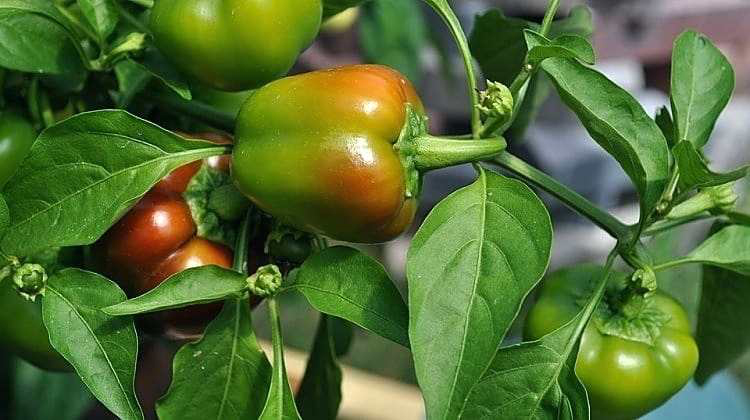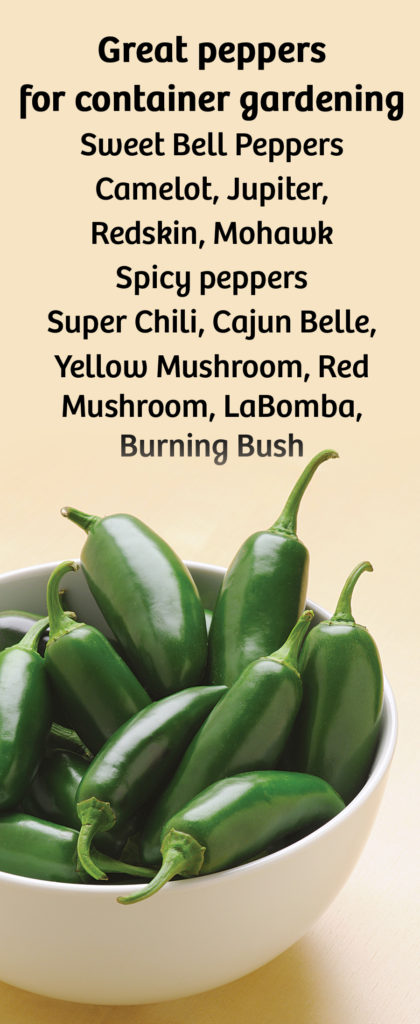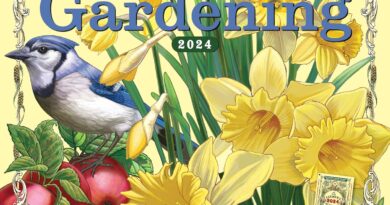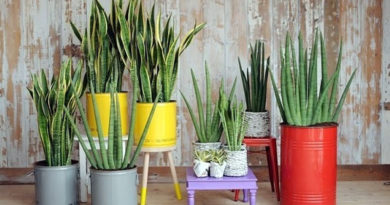Container Gardening: Peppers
Pretty patio peppers
As the container gardening trend heats up, peppers are staking out their place as one of the top plant picks. They are the ideal patio plant. They are pretty, easy to maintain and edible. New cultivars specifically designed for container gardening can be found at greenhouses everywhere − from tasty bells to multi-coloured varieties that provide some kick.
If you are new to container gardening, peppers may be the perfect starter plant for you. Your local greenhouse will be able to assist you with selecting a variety suitable for container life. You can also check out our top picks. By following a few simple guidelines you’ll be enjoying beautiful peppers all season long.
Choose your pot
When choosing a container it should be large enough to support a fully grown plant providing enough room for the roots to flourish. Two gallon pots are a good choice. And depending on the variety of pepper you choose, they may be able to accommodate two plants. If you are planning to reuse a pot be sure to clean it with a mixture of one part bleach and nine parts water. Containers will need to have drainage holes to prevent root rot from developing. Placing a quarter to half inch of gravel or stone on the bottom of the container will also help.
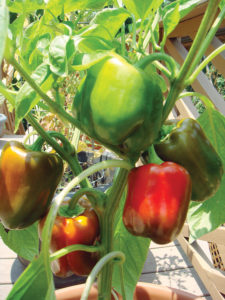
Choose your soil
Choose an organic-rich, light-weight potting mix with compost materials, such as pine bark, peanut shells, coir or other bulking substances − which will support healthy root development and assist in water retention. We don’t recommend using soil gathered from the outdoors as it will become compacted over the season and could carry disease or insects. Placing mulch on top of the soil will help prevent moisture loss and keep plant roots cool on hot days.
Young plants and seedlings are very susceptible to the cold and should not be placed outdoors until two weeks after the last chance of frost has passed. Bring plants indoors when days or evenings are cool. Peppers love long, warm days, but if the weather gets too hot you may notice a slowdown in fruit production. Not to worry, this will resume again as the weather gets cooler.
Water
The most important thing your plant will rely on you for is water. You will need to water it daily, and twice daily on exceptionally warm days. Check the soil to ensure it is always moist. Wilted foliage will be one of the first signs that your plant needs water. Peppers thrive in moist, well-drained soil. Water until the excess runs out of the drainage holes.
Plants should be placed in a window, balcony or spot that will allow them to have five or more hours of sunshine. Turn them daily to ensure even rounded growth.
Feed
After about two weeks your plants will have used up the fertilizer in the soil and will benefit from a compost tea, monthly slow release fertilizer or a weekly feeding of a water-soluble fertilizer. Balanced fertilizers such as a 20-20-20 will be fine to start but change over to a high potassium fertilizer once flowering begins. A 10-52-17 fertilizer combined with a liquid seaweed supplement will assist with both healthy root development and fruit production.
Peppers are self-pollinating but if you want to assist them you can use a small paint brush and lightly swirl it each inside blossom.
Be sure to pick peppers as they ripen so the plant can continue to allocate its resources to new fruit production. Remove rotted, overripe, dead or diseased fruit to keep you plant healthy. And that’s all it takes to enjoy these healthy vegetables on a patio. q

